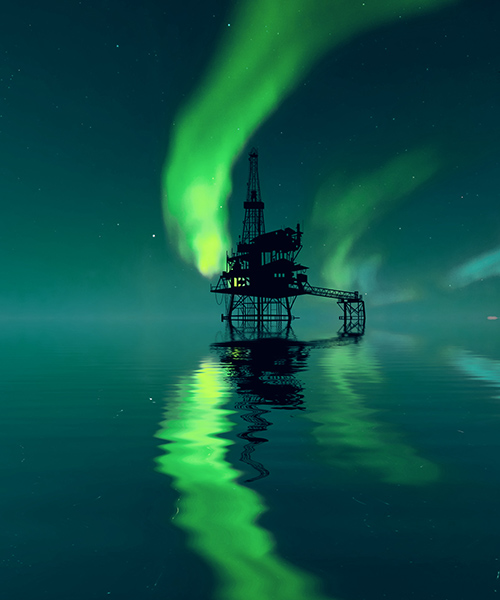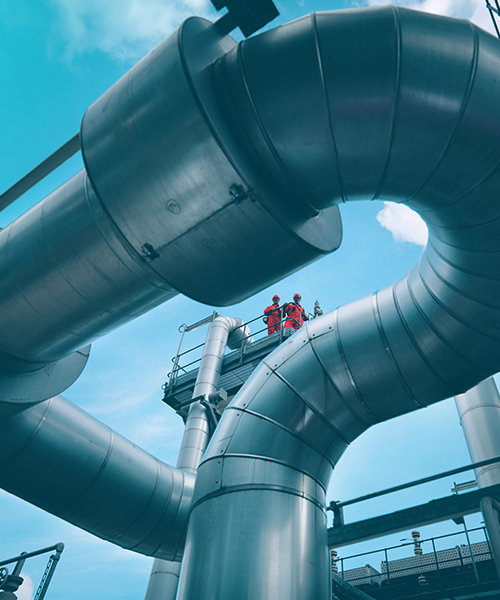August 26, 2021 • 4 min read
Conventional energy: Understanding ‘not permanently attended’ installations
Kirsten Oliver, Vice President, Conventional Energy looks at how not permanently attended installations fit into the future of the oil and gas industry
Many oil and gas reservoirs are a long way off depletion. Right now, there is still a need to keep extracting their resources. But we need to do it sustainably.
We are seeing new ways of thinking emerge, born out of the need to decarbonize and maintain lean operations. This is creating a range of solutions for our customers. One of those is converting traditionally attended oil and gas platforms into not permanently attended installations (NPAI).
Why operators should consider NPAI
When it comes to older assets with operating equipment nearing end of life, operators need to decide whether to decommission or extend asset life, both of which require further capital investment.
Operators may query the cost effectiveness of investing in NPAI conversion on assets that are 40 or 50 years old, even though once converted, running costs are significantly less. Some may challenge that it’s best to keep running aging assets as they are, avoiding upgrade and conversion costs.
However, as basins age, reservoirs produce more water and less oil and gas. The recovery of every barrel becomes progressively more energy intensive and more expensive. As time goes by, the cost of production will exceed the value of hydrocarbons that are produced.
By choosing to extend the life of an asset through converting to an NPAI, production costs are lower, and resources can continue to be extracted profitably.
NPAI maximize the potential of digital and automation
Just a few years ago, the thought of automating oil and gas platforms was a vision for the distant future. But now we have the capabilities to accomplish this today. Technology is advancing and adapting at a rapid pace and is an enabler in this scenario.
To make it possible, upgrades need to be carried out on electrical and instrumentation equipment to interface with digital onshore controls. This allows for more efficient decision making.
By automating controls and processes such as chemical injection, valves and pumps, and cleaning, monitoring and maintaining pipelines means operations can be carried out remotely with reduced personnel levels on site. This, in turn, reduces the exposure to risk for personnel by removing them from a potentially hazardous environment.
NPAI can help reduce CO2 emissions
Traditionally, oil and gas platforms run on gas turbines, which contribute to a large proportion of CO2 emitted by the assets.
However, it will become less viable to power offshore installations by emission-heavy power sources. Regulatory compliance and social license to operate is a challenge facing operators in the face of the energy transition.
An NPAI can reduce CO2 emissions while still doing the same job as a traditional asset. We can take an existing, aging asset and extend its life in a sustainable way by changing its power source to renewable energy.
If only a small amount of power is required for control and monitoring, then a combination of solar panels, small wind turbines and battery storage to run electric drives can be a good alternative. For larger power demands, power from shore or from larger renewable sources may be needed.
NPAI create an upskilled workforce
Even with the reassurance of safety and automation, people still sometimes imagine NPAI as having no people on them ever. But this isn’t the case.
Regular operational visits are still required for tasks, such as topping up chemical supply tanks. Maintenance routines will still be mandatory for the safe operation of assets. However, due to the simplification and automation of NPAI mode, routines won’t be required as regularly or on the same scale.
While these cultural shifts can be challenging, converting existing assets to NPAI could provide a stepping stone for both the industry and workforce.
For example, in the North Sea we have a robust and highly skilled workforce, but the traditional roles they are in won’t always be there. Converting to NPAI means new roles will be created to grow with the collaboration of oil and gas, renewables and digital. Having a middle ground between continuing to extract resources and doing so in a sustainable way allows for our current workforce to upskill, and attracts new talent from younger generations.
A new life for aging conventional energy assets
Continuing to operate conventional energy assets in the same manner as before – given inevitable production decline – is not viable and may lead to early decommissioning. Having a pathway to extend field life and reduce operating costs while simultaneously reducing CO2 and methane emissions is an opportunity for positive change.
Converting assets to NPAI is not a quick fix nor is it designed to be everlasting. But it is a solution to allow the oil and gas industry to evolve and grow as we takes strides to improve sustainability performance.




